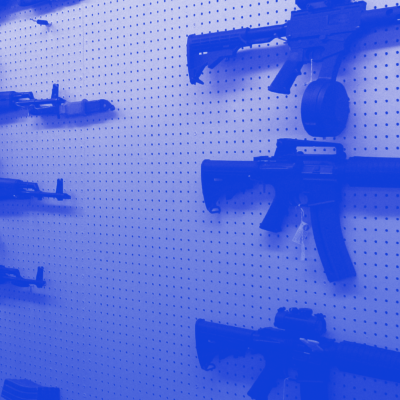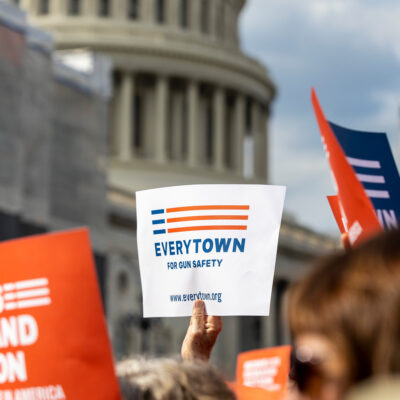As Holidays Start, Suggestions for Covering Suicide and Gun Violence During the Coronavirus Pandemic
11.23.2020
As the number of new coronavirus cases continues to surge across the country, millions of people are sheltering in place, spending the holidays isolated from friends and family, and struggling financially from the economic fallout. Against this backdrop, experts continue to raise the alarm about the heightened risk of suicide — citing the uptick in calls to suicide prevention hotlines, more people having suicidal thoughts during the pandemic, and record gun sales.
Research shows that having access to a firearm triples someone’s risk of death by suicide. A recent study by the American Journal of Preventive Medicine also found that of the people who bought a gun during the pandemic, about 70% reported having suicidal thoughts — with 25% of them within the past month. To illuminate the links between firearm access and suicide and highlight approaches to prevention, Everytown for Gun Safety Support Fund this year released reports detailing the rise in youth suicide over the last decade, the potential impact of coronavirus on gun suicide without action from policymakers, and a first of its kind study tracking firearm suicide by congressional district.
By covering this public health crisis, reporters can inform readers about life-saving resources and highlight policy solutions, but they should do so in a way that does not increase stigma or contribute to possible contagion effects. If your news organization decides to cover these tragedies, please consider following the advice below for journalists covering suicide.
The recommendations below are from the Recommendations for Reporting on Suicide website, which was developed by suicide prevention experts, international suicide prevention and public health organizations, schools of journalism, media organizations and key journalists as well as Internet safety experts. Their partners include but are not limited to American Foundation for Suicide Prevention, Suicide Awareness Voices of Education, American Association of Suicidology, and Suicide Prevention Resource Center.
- Report suicide as a public health issue. Including stories on hope, healing, and recovery may reduce the risk of contagion.
- Include resources. Provide information on warning signs of suicide risk as well as hotline and treatment resources. At a minimum, include the National Suicide Prevention Lifeline (listed below) and Crisis Text Line or local crisis phone numbers.
- Use responsible language such as “died by suicide” or “killed him/them/herself,” rather than stigmatizing and shame-inducing “committed suicide” language.
- Emphasize help and hope. Stories of recovery through help-seeking and positive coping skills are powerful, especially when they come from people who have experienced suicide risk.
- Report the death as a suicide; keep information about the location general.
- Report that coping skills, support, and treatment work for most people who have thoughts about suicide.
- Describe suicide warning signs and risk factors (e.g. mental illness, relationship problems) that give suicide context.
- Research the best available data to show the scope of suicide and use words like “increase” or “rise” instead of words that can overstate the problem.
- Provide context and facts to counter perceptions that the suicide was tied to heroism, honor, or loyalty to an individual or group.
The full list of recommendations on how to report on suicide is here.
Everytown for Gun Safety, Moms Demand Action, and Students Demand Action advocate for gun suicide prevention practices and policies, including secure gun storage and red flag or extreme risk law legislation. Secure gun storage can save lives. The 14 states with Child Access Prevention laws, or secure gun storage laws, saw an 8 percent decrease in overall suicide rates, and an 11 percent decrease in firearm suicide rates, among adolescents aged 14 to 17. One study estimated that if half of households with children that contain at least one unlocked gun switched to locking all their guns, one-third of youth gun suicides could be prevented. Programs like Be SMART help families educate on the most effective secure storage practices.
Additionally, extreme risk laws save lives. A person who displays warning signs that they’re considering suicide or engaging in a violent act, but who is not prohibited under current law, would still be legally able to buy and possess guns. Research shows that having access to a firearm triples one’s risk of death by suicide. This elevated risk applies not only to the gun owner but also to everyone in the household. Following Connecticut’s increased enforcement of its extreme risk law, one study found the law to be associated with a 14 percent reduction in the state’s firearm suicide rate.
If our organization can be a resource, do not hesitate to reach out. More information about gun suicide is available here.
If you are a survivor of gun suicide and gun violence, resources from the Everytown Survivor Network are available here. If you are struggling and need to talk, the National Suicide Prevention Lifeline is always open: 800-273-8255.




